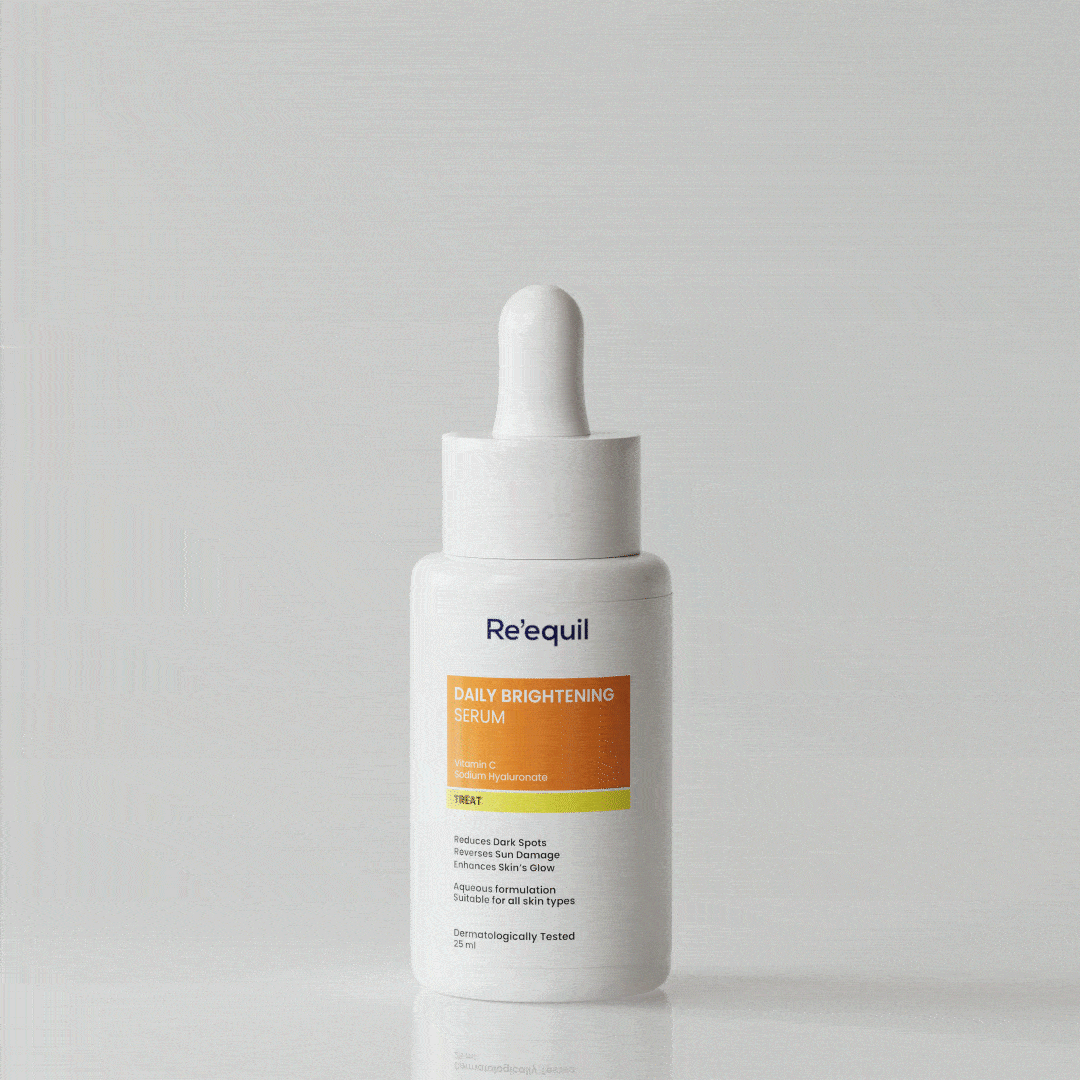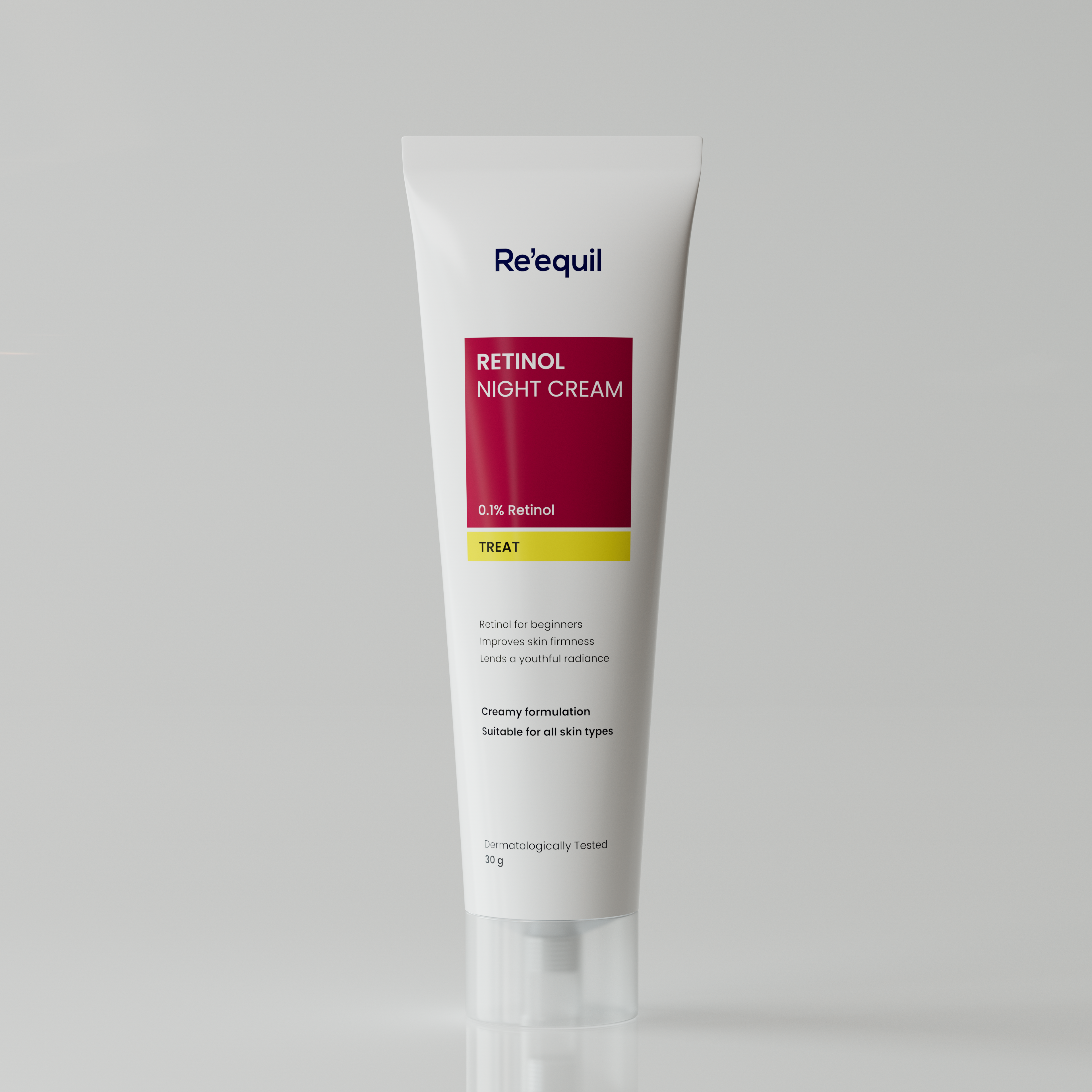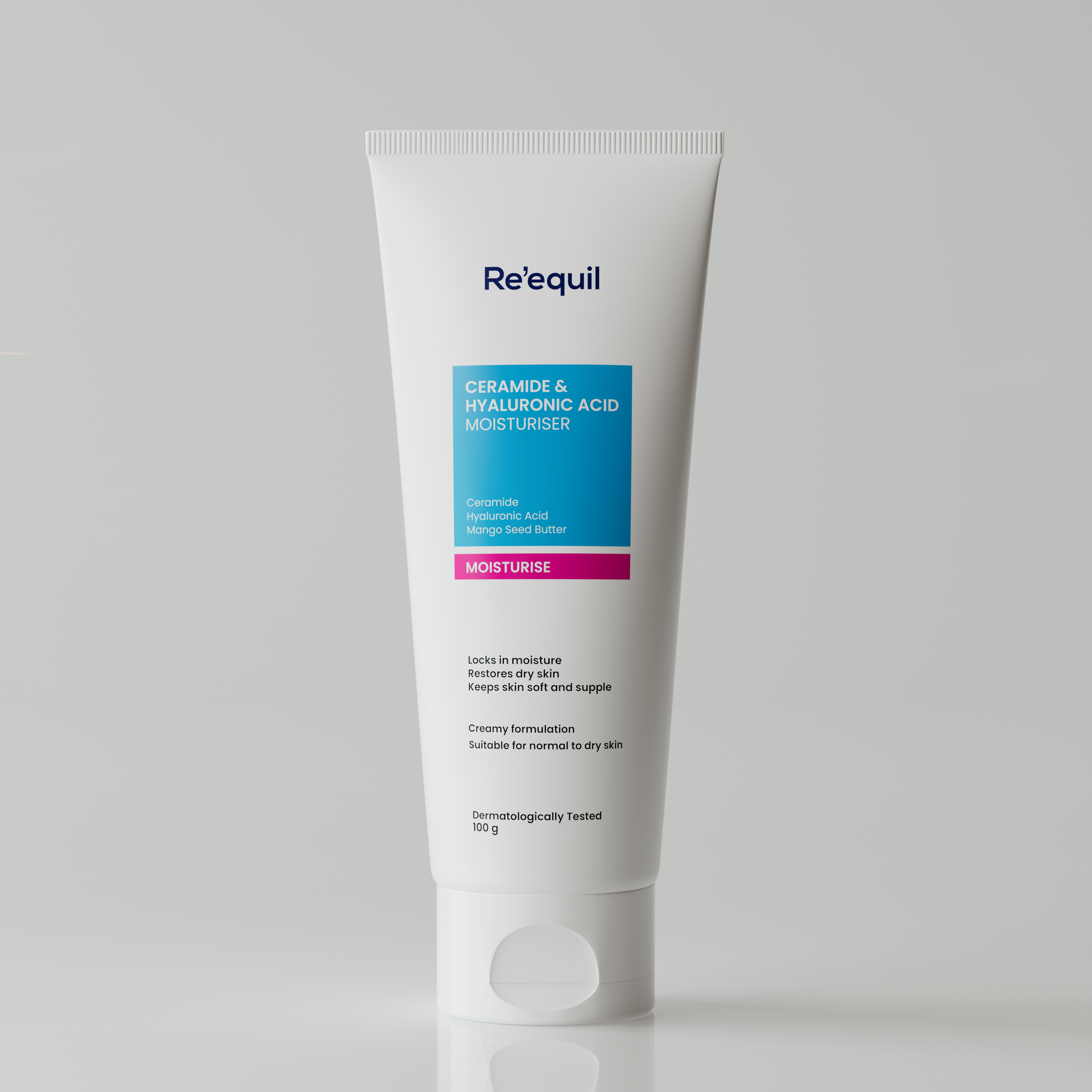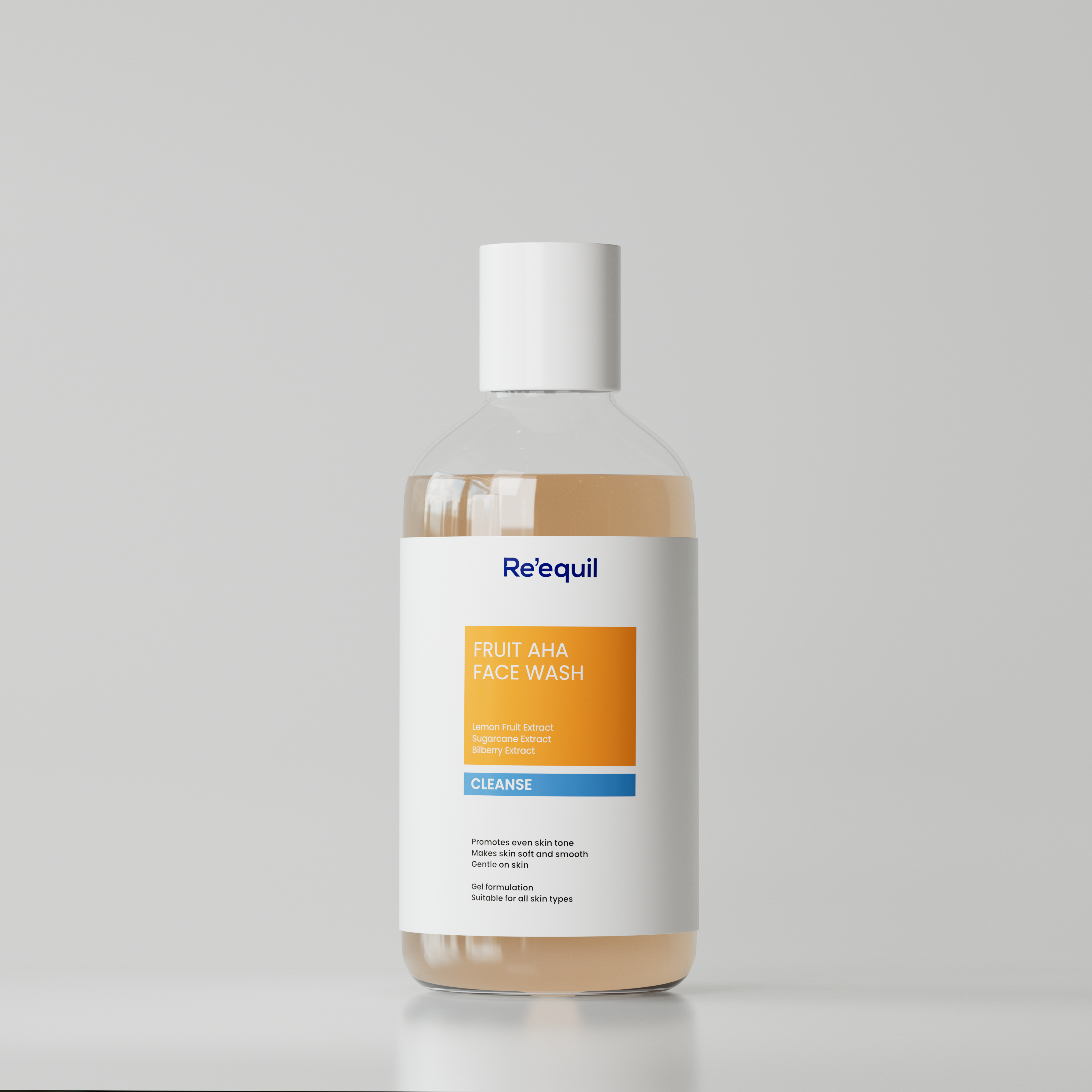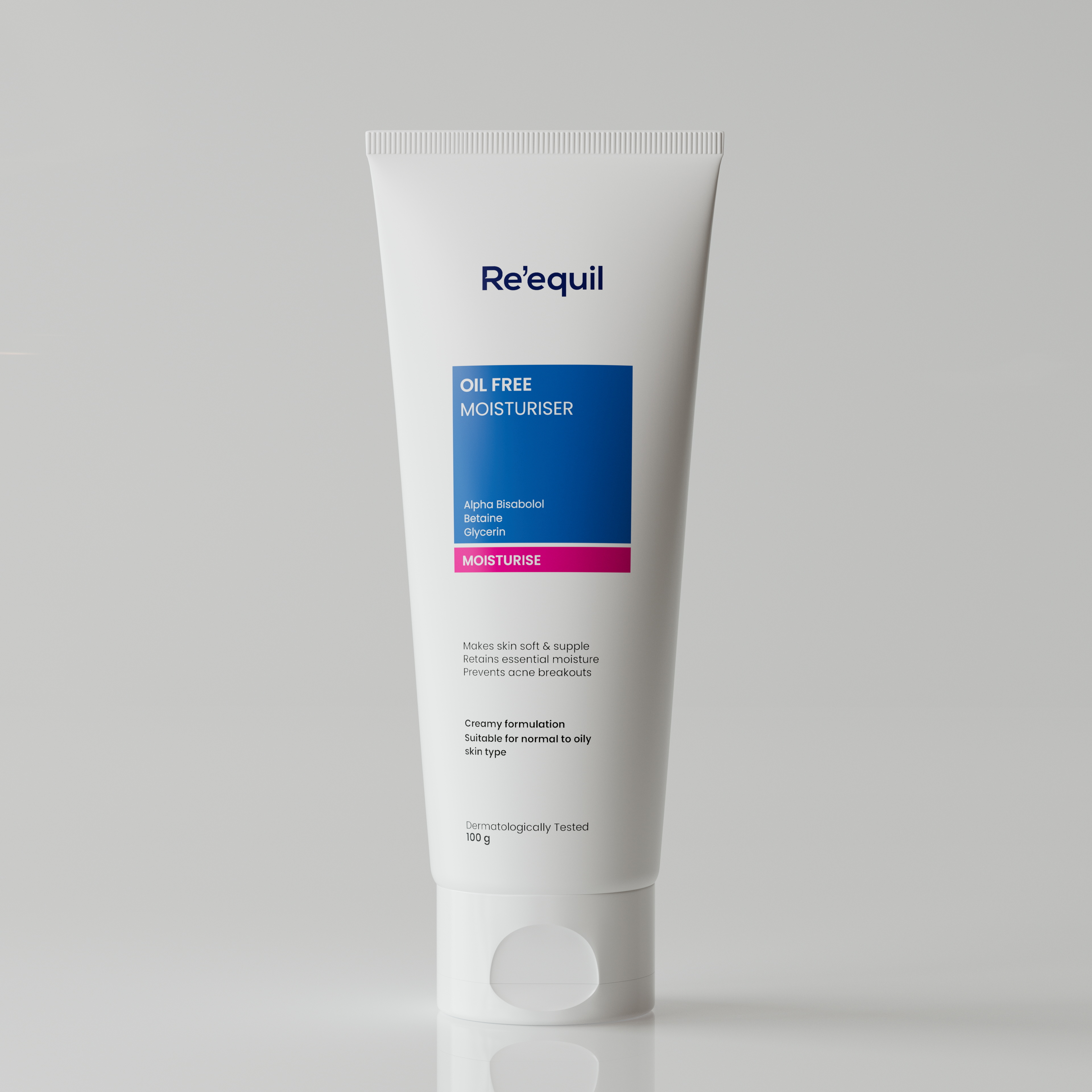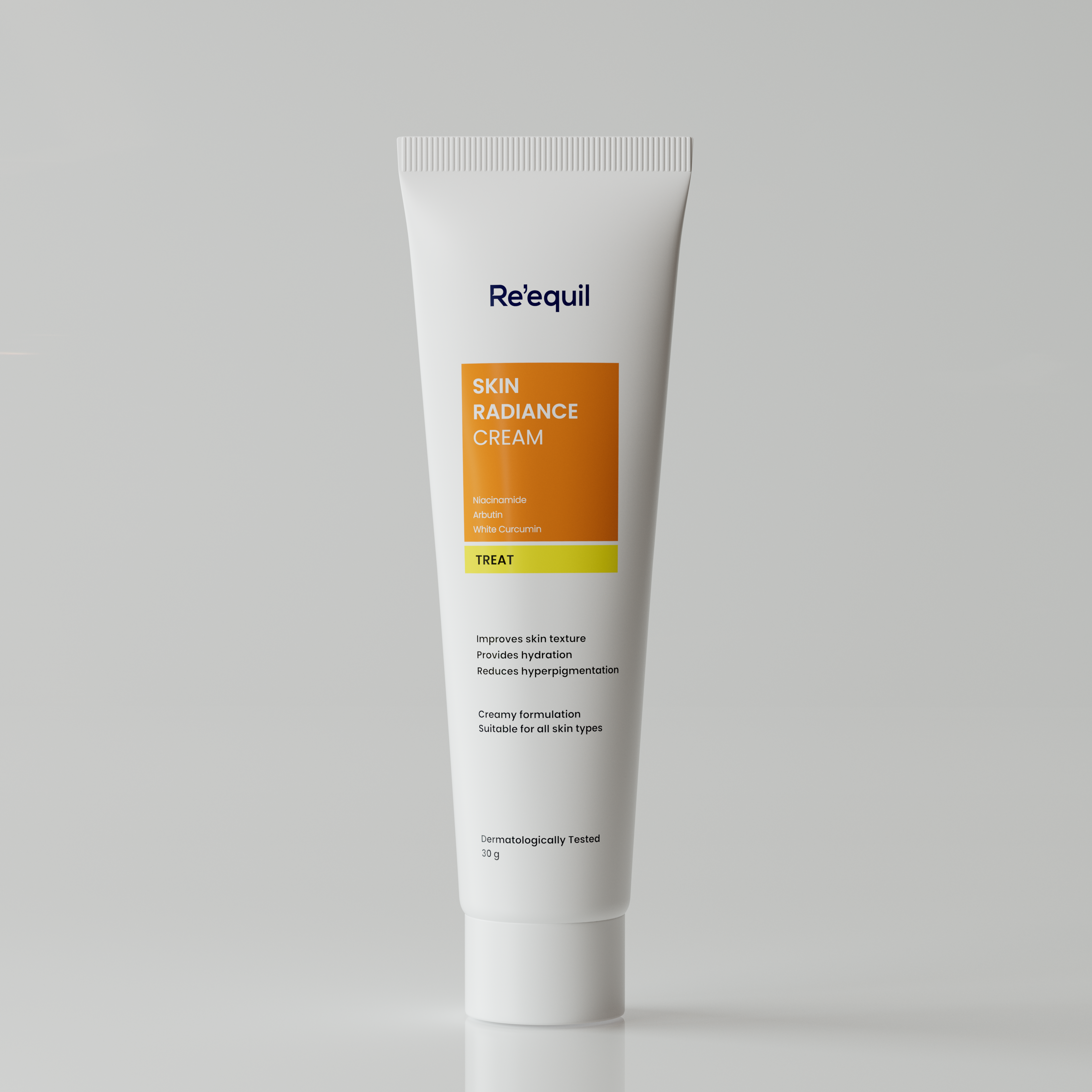What to do when you are dealing with more than one problem at a time and are frustrated with the countless different solutions that all seem to contradict each other?
With oily and combination acne-prone skin, one has to deal with a broad spectrum of associated problems, such as acne breakouts, excess sebum, and a greasy appearance.
When you try to deal with one, you are likely to unbalance the other.
Hence, you are always confused about which products to pick off the shelf and whether or not to apply a moisturiser.
Don't worry, as we have just customised a skincare routine specifically for those dealing with oily and combination acne-prone skin. But first, understand the basics of oily acne-prone skin and combination acne-prone skin.
Understanding oily acne-prone skin type
Oily acne-prone skin is characterised by the overproduction of sebum and natural oils, resulting in a shiny, greasy appearance.
The leading cause of this skin type is an overproduction of oil by the sebaceous glands. This excess oil can clog pores and trap bacteria, which leads to breakouts.
Additionally, the increased oil production can create an environment where bacteria and other impurities thrive, making the skin even more vulnerable to sun damage.
If you have this type of skin, it is essential to use products that won't further aggravate it and help keep it clean and free from oil buildup.
Understanding combination acne-prone skin type
Combination acne-prone skin type is a common skin type that occurs when there is an imbalance of oil production across the face.
It is characterised by an oily T-zone (forehead, nose, and chin) area and dry/normal cheeks.
The excess sebum production in the T zone clogs pores, leading to breakouts and enlarged pores.
It's essential to use a gentle cleanser, exfoliate regularly to clear out dead skin cells, and use spot treatments for breakouts to treat combination acne-prone skin.
Hormonal changes, stress, diet, lifestyle, and genetics may be some of the causes behind this type of skin type.
READ - An Ultimate Skincare Routine For Combination Skin
Common skin concerns for those with oily or combination acne-prone skin
Oily and combination acne-prone skin comes with its own set of unique challenges, especially when it comes to finding the right skincare routine.
Common concerns for people with this skin type include -
- Enlarged pores
- Excess oil production that can lead to breakouts
- Uneven skin tone.
- May even experience shine, greasiness, and enlarged pores with blackheads, whiteheads, and pimples.
5 step (simple and effective) skincare routine for oily/combination acne-prone skin
1. Choose an anti-acne cleanser that has a gentle cleansing action
As explained above, acne-prone and combination skin types tend to produce excess oil due to the highly active sebaceous glands.
Therefore, your skin requires a cleanser that can remove dirt and extra oil from your face without leaving your skin dry and irritated.
For people with oily and combination skin types, it is advised to look for an anti-acne cleanser that has antibacterial properties, is sulphate and paraben-free, and has non-comedogenic and hydrating properties.
A cleanser that can help towards regulating excessive oil.
Research has proven that Zinc PCA is highly effective in regulating sebum production. A cleanser boosted with Zinc PCA can be a great choice for managing this skin type.
It is a powerful combination of zinc and pyrrolidone carboxylic acid (PCA) that supports skin health, making it an effective ingredient for oily or combination acne-prone skin.
Additionally, zinc PCA has anti-inflammatory properties that work to soothe inflammation caused by acne.
2. Include toner to refine enlarged pores
A toner is a fast-penetrating liquid that can benefit your skin in numerous ways.
- It helps to remove any residues, such as makeup, oil, etc., left behind on your skin after cleansing.
- It provides a quick hit of hydration.
- It helps in clarifying enlarged pores by minimising their appearance.
- It also preps your skin for the following product to get absorbed quickly into your skin.
Toners with alcohol as an ingredient tend to dry out the skin.
Therefore, it is always advised to opt for an alcohol-free toner that contains antibacterial ingredients such as Witch Hazel, Willow Bark, Nasturtium officinale Extract, and Aloe Vera that soothe your skin while demolishing the acne-causing bacteria.
3. Include anti-acne face serum
A serum is a thin viscosity product with concentrated active ingredients.
A few potent active ingredients for this skin type are -
- Salicylic Acid
- Niacinamide
- Peptides
When incorporated in a serum formulation, these ingredients seep into the deeper layers of the skin and deliver relief from acne-causing bacteria.
Additionally, serums are also formulated to help heal existing pimples and prevent future breakouts.
Here is some more information about these ingredients -
Salicylic acid
Salicylic acid has been a blessing for oily and combination skin as it is soluble in oil which later enhances the skin's natural exfoliation.
This ingredient in OTC products gives visible results in your acne healing journey because of its exceptional properties, like exfoliating skin by reducing acne, keeping pores clear, and dissolving dead skin cells from the pores to prevent acne and breakouts.
READ - Glycolic Acid vs Salicylic Acid: What you need to know
Niacinamide
This ingredient has antibacterial properties that help in treating acne, supports in controlling sebum production, aids in calming redness with its anti-inflammatory properties, and diminishes the appearance of breakouts.
Research says it is a highly compatible ingredient with skin when treating hyperpigmentation and maintaining barrier functions.
READ: Should Niacinamide be in your skincare routine if you have oily skin?
Peptides
The peptide is one of the tremendous acne-treating ingredients with remarkable antimicrobial properties to fight against propionibacterium (acne-causing bacteria).
Peptides help relieve inflammation, balance sebum oil production, repair skin damage, and clear breakouts.
This also exhibits skin-hydrating properties. It also helps maintain the moisture content in your skin.
Opt for any of these serums based on your skin concerns. These are not just the most hyped but effective ingredients when treating concerns relating to oily skin and acne-prone skin.
4. Moisturise skin to control excessive oil production
People with oily and combination skin often sidestep moisturiser in their skincare routine due to greasy skin texture.
However, numerous skin specialists have explained that neglecting moisturising can cause a lack of nourishment and hydration for any skin type.
Finally, it leads to excessive sebum production that can clog pores and cause acne.
As an outcome, it is crucial to include an oil-free mattifying moisturiser that is non-comedogenic.
Ingredients in a moisturiser for oily skin are - Saccharide Isomerate, Glycerin, Hyaluronic Acid, etc.
These help boost hydration without giving that shiny and greasy texture to your face all day long.
Saccharide isomerate is an excellent hydrator that won't leave your skin greasy or shiny. Glycerin is another hydrator that helps to draw water into the skin and keep it there.
Lastly, Hyaluronic Acid is worth considering for its ability to hold onto moisture.
All these ingredients can help boost hydration without making your skin feel oilier and the mattifying look and feel can be a game-changer for people with an oily skin type.
5. Incorporate sunscreen to avoid the exacerbation of acne and post-acne scars
Avoiding sunscreen can be a big mistake for acne-prone skin, be it oily or combination.
It can cause sunburn, breakouts, and even premature ageing with inflammation that can further worsen acne. Ensure that you add a broad-spectrum sunscreen with an SPF of at least 50 to your skincare regime.
Alongside sun shield filters, a few ingredients worth considering for your sunscreen are - Eurol Bt and Aloe vera Extract.
Derived from Olea Europaea (olive) leaf extract, Eurol Bt is an excellent free radical quencher with great sun protection, anti-acne, and anti-ageing properties.
Do not miss out on the PA rating. Opt for the one that has PA+++ or more.
Quick Enlightenment - Always pick a non-comedogenicsunscreen. Non-comedogenic sunscreens are designed not to block pores, so they won't contribute to the buildup of oil or sebum, which can lead to breakouts.




